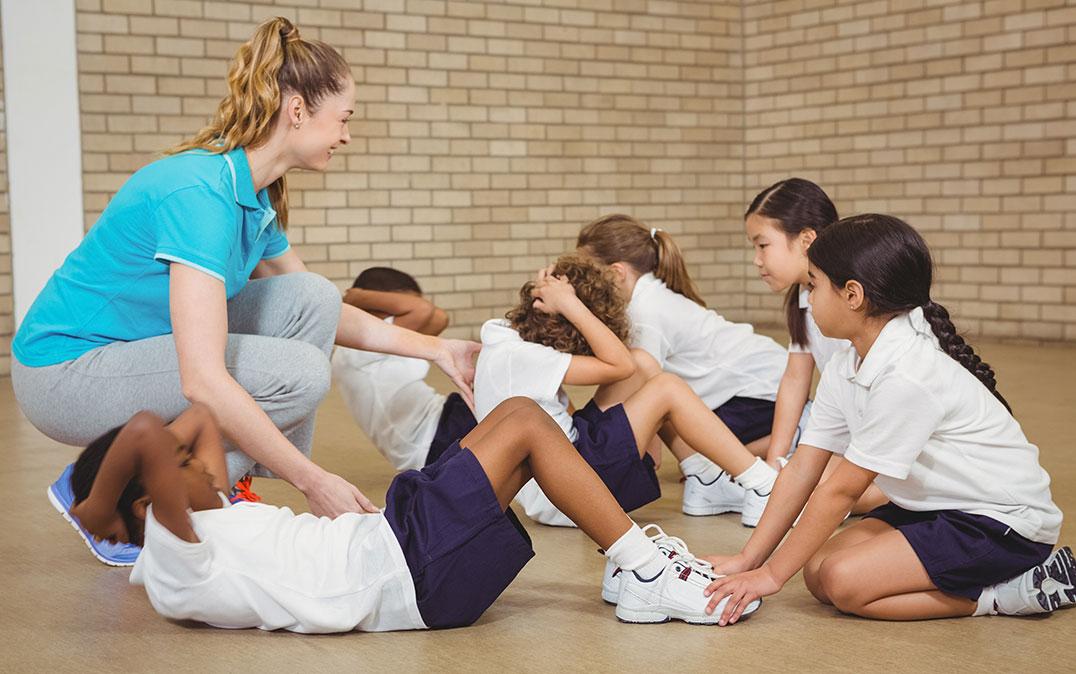Research News
Room to Grow: Improving Physical Education for Japanese Language Learners

Image by wavebreakmedia/Shutterstock
Researchers from the University of Tsukuba find factors related to the quality of physical education for Japanese language learners
Tsukuba, Japan—In recent years, Japanese public schools have become increasingly diverse in terms of ethnicity, culture, religion, and language. Currently, researchers from Japan have generated new information and knowledge that may help elementary school teachers to guide Japanese language learners (JLLs) to adapt to the Japanese school environment.
In a study recently published in Scientific Reports, researchers from the University of Tsukuba have identified several themes that relate to the pedagogical experiences of teachers in physical education (PE) classes that include JLL students.
The researchers studied this topic using positioning theory, which, in the context of teaching, refers to political or hierarchical interactions among conflicting values held by teachers and students. This theory can be used to explain ways in which teachers make decisions about pedagogical strategies and behavior management, which can have important impacts on students. Previous research has indicated that teachers are not always aware of how to support children from diverse backgrounds, including JLLs. Accordingly, the researchers at the University of Tsukuba investigated whether positioning theory could be used to identify relevant factors.
"Many educators experience challenges when teaching PE classes for JLL students", says research leader of the study, Professor Takahiro Sato. "Therefore, we examined phenomena related to the experiences, positioning, and reflections of elementary teachers regarding teaching PE classes for JLL children."
To do this, the researchers conducted an interpretive case study in which they asked public elementary school teachers to complete a questionnaire, online interviews, and follow-up email interviews.
"The results were surprising," explains Professor Sato. "We found that all of the participants believed that they needed to have culturally relevant pedagogies to respect the physical, emotional, and social backgrounds of JLL children in PE class."
In fact, three main themes emerged related to lesson planning, interacting with the parents of JLL children, and accommodating the cultural and behavioral differences of JLL students in PE class.
"Our findings indicate that PE classes that include JLL students may be an important environment for teachers and all students to gain cultural awareness and mutual understanding", says Professor Sato.
The current study provides unique insight into the self and interactive positioning and teaching experiences of elementary school teachers in elementary education in Japan. Given that PE provides opportunities for students and teachers to interact with one another in new ways, it may be a key element in raising awareness about social justice and diversity.
###
The authors disclosed receipt of the following financial support for the research, authorship, and/or publication of this article: This work was supported by the grant of the Japan Science and Technology Agency Supporting for Pioneering Research Initiated (JST SPRING Grant No. JPMJSP2124).
Original Paper
The article, "Public elementary school teachers' positioning in teaching physical education to Japanese language learners" was published in Scientific Reports at DOI: 10.1177/1356336X221104912
Correspondence
Professor SATO Takahiro
Faculty of Health and Sport Sciences, University of Tsukuba
Related Link
Faculty of Health and Sport Sciences





